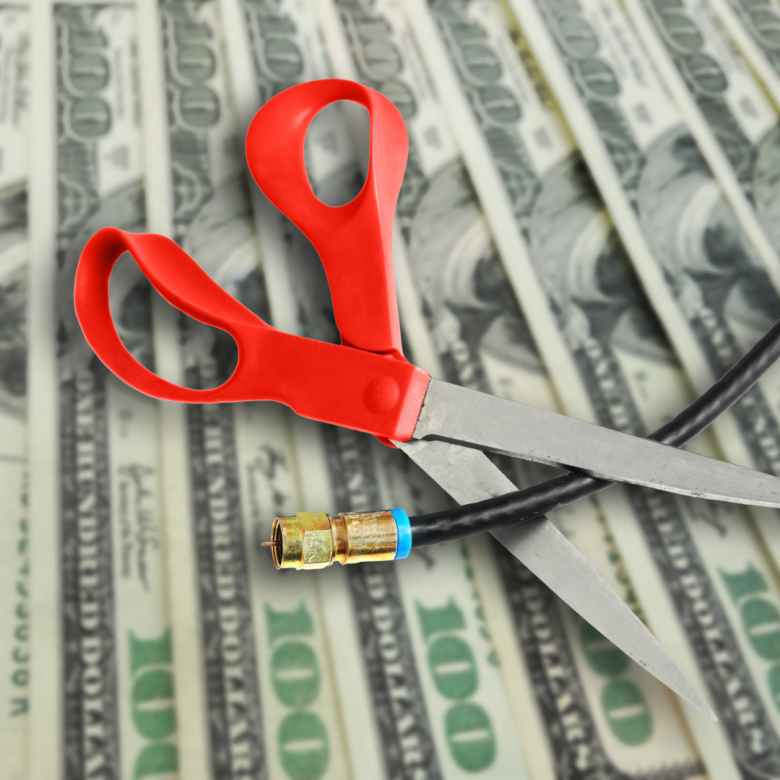In this article, we’ll explore some of the benefits of cord cutting and give you some alternatives to check out.
For many of us, paying for cable and satellite TV is not cost-effective, as we rarely watch the channels that come through or could potentially access the same content through cheaper means.


In my case, I was paying over $300 per month for my high-speed internet/cable service with an extensive channel package, plus premium channels like HBO and ShowTime. On top of that, I was paying for Netflix, Amazon Prime, and Hulu. By cutting the cord, I saved nearly 50% on TV and internet. This was a great decision and helped quite a bit with my overall monthly budget!
So, it’s perhaps unsurprising that cord cutting has become a trend with so many people in the US. In other words, they are doing away with cable and satellite TV and are switching to other sources of digital content – either free or paid.
Should You Cut the Cord?
With the advent of digital content streaming services, such as Netflix and Amazon Prime, it’s now a better time than ever to “cut the cord.” A subscription with platforms like these is much more cost-effective than paying for cable TV, and having access to thousands of hours of on-demand content is certainly a big pro.
And, as there are some alternatives to cable TV which are completely free, it’s possible to reduce your monthly spending on digital content to $0.
However, there are some potential drawbacks. For example, it’s unlikely you’ll be able to access exactly the same channels and content on the alternatives to cable TV.
Furthermore, as most of the alternatives need an internet connection, it may be a frustrating experience if you have slow or unreliable Wi-Fi.
Cord Cutting Options
The two main alternatives to satellite TV are streaming services and antenna TV. You’ll probably be best off making use of a combination of the two to maximize the content available to you while keeping costs reasonably low.
Streaming
As mentioned, streaming services are a very cost effective way to get access to an abundance of content, including movies (both new releases and older films) and TV series.
Most streaming services charge less than $10 per month and are purchased on a rolling monthly contract, so you can cancel any time.
Popular options include the likes of Netflix, Now TV, Apple TV and Amazon Prime. Another new streaming service, Peacock, is entirely free and offers an incredible lineup of TV shows and films. There is a paid version that adds even more options but the free version has enough content to keep you entertained for a very long time!
Antenna TV
Going back to good old free-to-air antenna TV is clearly the best option from a financial point of view, but it does come at the expense of not having access to most of the content you love.
We recommend using antenna TV to get access to live television channels, such as those part of the major networks (CBS, Fox and NBC) and relying on one or two streaming services for on-demand films and series.
A Quick Summary
- Cord cutting can be a great way to lower your monthly outgoings, as it’s a non-essential expense and there are quite a few cheaper alternatives out there.
- Switching to a streaming service will give you access to a greater pool of content – and the best part is it’s all on-demand, so you can watch your favorite movie or series whenever you feel like doing so.
- Antenna TV is another alternative, but it will only give you limited access to content.
- Having said that, as it’s free, it is worth utilizing both antenna TV and one or two streaming subscriptions to get as much bang for your buck as possible.






